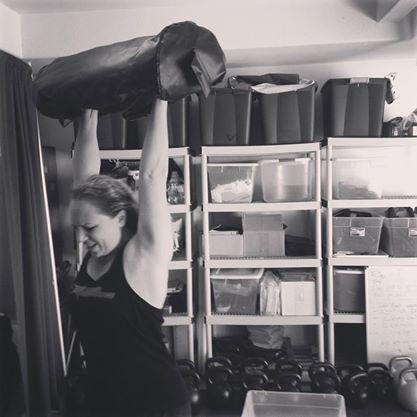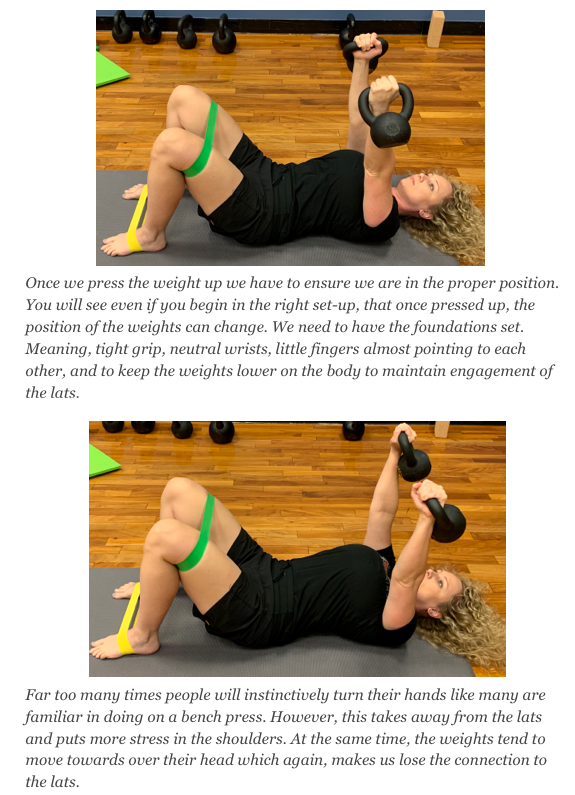Why Your Rotator Cuffs Aren’t Strong or Healthy
2020-08-9

Jessica Bento, Physical Therapist (Co-Creator of DVRT Restoration Certification and DVRT Shoulder & Pelvic Control Courses & 6-week Online Shoulder Masterclass)
I would say it was the number one thing that got me into physical therapy. My dreams for most of my youth was to go to the Atlanta Olympics for swimming. Crazy enough I was on the path and close to trying out for the national team, then it happened. You wouldn’t think in a sport like swimming you could have a bad injury, but it happens more than most realize. Both my shoulders got shredded. I tore both my rotator cuffs so badly that I not only had my dream crushed, but was left with a lot of pain and weakness.
Going into physical therapy school I was interested in not only helping others but myself as well. After completing my Master’s I thought “now I can make myself better”. The reality was that even after doing all the things I was supposed to in order to help my rotator cuffs, I still had a lot of weaknesses and issues with the shoulders. How bad? I could really press anything overhead without pain and great discomfort.

I am a huge proponent of DVRT because I have personally lived the changes it makes it how you live and train!
That forced me to re-think how I addressed rotator cuffs and the shoulder complex overall. Before I met Josh I was actually getting into the work of a renown physical therapist, Gary Gray. For those that don’t know, Gary is considered one of the founding fathers of functional training. His work changed my perspective on movement, the body, and yes, rotator cuffs. He broke down the typical issues in how people address rotator cuffs in these points…
-Without integration, the client is almost always put in a position that has no relationship with the activity that they want or needs to perform. This changes the effect of gravity on the movement. In functional movements, gravity is “measured” and utilized by the body as part of the movement.
-The joints adjacent to the focus area are discouraged/prevented from contributing to the movement. In functional movements, all the joints contribute together to create success.
-The mechanical transducers in the tissues (proprioceptors) are contributing abnormal/deficient information for coordination.
-The integration of information from the proprioceptive, visual, and vestibular systems is prevented.
His work was very inspirational, but to be honest, I struggled to put it into practice. That is what working with Josh helped me do, fill in those gaps. There were several big keys Josh shared with me that made helping make rotator cuffs better make so much more sense.
Our body always works from the ground up, so we can’t look in isolation because our body never functions that way in life. It almost confuses our nervous system to try to do so. When it comes to shoulders and the rotator cuff we are talking about the fact that the shoulder complex is connected to the core, opposite hip, and lower leg/foot. This is known as the spiral line as this video shows really well.
https://www.instagram.com/p/B6YG9FepgS4/
That means whenever we do exercises for the shoulder and even more important for rotator cuffs (I’ll explain why in a moment), integrating this chain is essential for making better and faster improvements. This can be simple in just getting people in positions like half kneeling or sprinter stances for example.
https://www.instagram.com/p/CCvfrqDH3gY/
That is why the exercises above wouldn’t make sense for most people when it comes to training rotator cuffs but if you understand how the body functions it starts to make so much sense.
Grip has a HUGE correlation to rotator cuffs but that doesn’t just mean squeezing as hard as you can. If you hold your arm in the RIGHT position you get a huge integration of the lats and core that help give stability and strength to the shoulder. That is why core exercises like these can actually make a positive impact upon shoulders and rotator cuffs.
https://www.instagram.com/p/CDWMQGxH41y/
Below is taken from our PKM course (you can find HERE) and shows what I mean by the RIGHT position. The top picture shows how we ingrate the lats and core, the bottom shows how if we even try to integrate grip we can’t make these connections because it is a bad angle.

Third I’ll combine a bit of two points since they work well together. The first part is the diagonal patterns that our body loves! I know when you go to the gym you see a bunch of people that just move up and down, but that shows our disconnect from what our body wants to do in movement. If you look at the spiral line we showed earlier, it forms a diagonal pattern from the shoulder to the hip. Our body loves circular and diagonal movements because that makes for efficient movement. That is why the famous physical therapy system of PNF is so powerful and you see this mostly in lifts/chops.
The other component comes in deceleration training. Josh has written a lot about how many injuries come from an inability to resist or decelerate force. Rotator cuffs are a great example of this as most rotator cuff injuries are not lacking an ability to lift a weight, but decelerate the arm. When you look at DVRT drills below you see all these concepts of training rotator cuffs smarter being applied. Pulling the Ultimate Sandbag apart, the angle of the band pressing, the stances to integrate the foot, hip, core, and focusing on deceleration as much as lifting.
This has had such a profound impact on me personally, my hope is that if you are or are helping those struggling with rotator cuffs that just don’t seem to be getting better than you know have way more information on how to make improvements and make the quality of life for people so much better!
Don’t miss the FINAL week to get our early bird and sign-up for our upcoming 6-week online Shoulder Masterclass that will be starting January 18th HERE
https://www.instagram.com/p/CDoM0_gnvQI/
© 2025 Ultimate Sandbag Training. Site by Jennifer Web Design.







